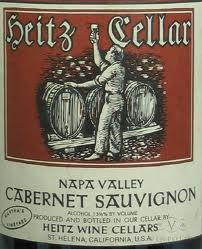Older, and wiser about old wines
In recent years, I’ve been fortunate to befriend several generous souls who have a good bit of old wine, mostly cabernet-based reds from France or Napa, circa 1970-1990. I don’t own any of this stuff, and it’s always fun to try it
 The results, not surprisingly, are wildly varied. Some are amazing (thanks, Annette, for that 1981 Heitz Martha’s Vineyard). Others ““ perhaps most ““ are interesting but unremarkable. And on a few occasions, I have come away thinking, “well, they brought old wine. I brought good wine.”
The results, not surprisingly, are wildly varied. Some are amazing (thanks, Annette, for that 1981 Heitz Martha’s Vineyard). Others ““ perhaps most ““ are interesting but unremarkable. And on a few occasions, I have come away thinking, “well, they brought old wine. I brought good wine.”
Something about these experiences prompted a déjà vü feeling, and I just this week realized what that was all about. This is the same kind of crapshoot that buying and trying red Burgundy was until just a few years ago, an admixture of the sublime and the ridiculously bad.
I spent the better part of the 1990s buying my dad Gevrey Chambertins for Christmas. Not a one proved to be worth the money, and some were nigh on to undrinkable. Part of it was my fault, not knowing what I was doing. But I don’t think it’s naïve to expect that for $35-$60 then (more like $50-$80 now), you should be able to get something good.
Two things have happened since. Winemaking techniques have improved mightily (the  smart guys in Bourgogne incorporate the old and the new), and it has become easier to identify which vintners are making the best stuff in the sundry appellations there.
smart guys in Bourgogne incorporate the old and the new), and it has become easier to identify which vintners are making the best stuff in the sundry appellations there.
“There are no bad vintages anymore,” Laurent Drouhin (left) declared to a Twin Cities audience a couple of years ago. And because even the larger wineries such as his family’s Joseph Drouhin have incorporated much smarter practices in both the vineyard and the winery, I believe he’s right.
I hope to continue to enjoy old wines from all over the world, but if it’s from Burgundy and was bottled in the 20th century, my expectations, based on experience, will not be as high as they will for the younger stuff.



